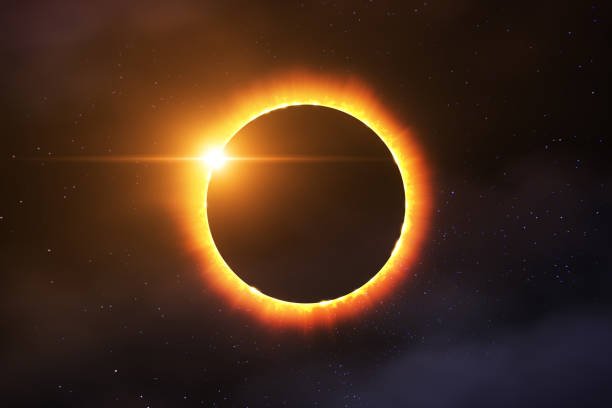In the year 2024, sky gazers and astronomy enthusiasts are in for a treat as the celestial stage is set for both solar and lunar eclipses. These mesmerizing events, where the Earth, moon, and sun align in extraordinary ways, offer a rare glimpse into the wonders of our cosmic neighborhood.

Solar Eclipse: A Dance of Shadows and Light
One of the highlights of 2024 is the anticipated solar eclipse. As the moon gracefully positions itself between the Earth and the sun, a shadow is cast upon our planet, momentarily dimming the brilliance of our nearest star. This celestial dance will create an awe-inspiring sight for observers lucky enough to be in the right location.

Date and Visibility:
There are Two Solar Eclipse Falls in 2024.
- First Solar Eclipse will fall on April 8, 2024. It will begin over the South Pacific Ocean and cross North America, passing over Mexico, the United States and Canada.
- Start Time 03:42 PM (UTC)
- End Time 04:36 PM (UTC)
- Second Solar Eclipse Falls on October 02, 2024. It will be an Annual Solar Eclipse where a ring of Fire Solar Eclipse, occurs as New Moon moves in front of Sun. It will be visible in South America, Antarctica, the Pacific Ocean, the Atlantic Ocean and the North America.
- Start Time 03:42 PM (UTC)
- End Time 05:50 PM (UTC)
Safety Precautions:
It’s important to note that observing a solar eclipse requires special precautions to protect your eyes. Whether using solar viewing glasses or other approved filters, taking safety measures ensures that you can marvel at this celestial phenomenon without harming your vision.
Lunar Eclipse: Earth’s Shadow Cast Upon the Moon
In addition to the solar eclipse, 2024 promises a lunar eclipse, another captivating display of celestial alignment. Unlike the solar counterpart, a lunar eclipse occurs when the Earth comes between the sun and the moon, casting its shadow on the lunar surface.

Date and Visibility:
There are Two Lunar Eclipse Fall in 2024.
- The First Lunar Eclipse fall on March 25, 2024. It will be a Penumbral Lunar Eclipse during which the Moon passes through an outer region of the Earth’s shadow called the Penumbra. It will be visible in much of Europe, Australia and Africa, North/East Asia, North America, South America, the Pacific, Atlantic, Arctic, and Antarctica.
- Start Time 04:53 AM (UTC)
- End Time 09:32 AM (UTC)
- The second Lunar Eclipse will be on September 18, 2024. It will be a Partial Lunar Eclipse which will be visible in Europe, Asia, Australia, Africa, North/West North America, North/East South America, the Pacific, Atlantic, Indian Ocean, the Arctic, and Antarctica.
- Start Time 03:38 PM (UTC)
- Partial Lunar Eclipse 04:46 PM (UTC)
- Full Lunar Eclipse 06:03 Pm (UTC)
- Full Lunar Eclipse 07:02 PM (UTC)
- End Time 08:18 PM (UTC)
Understanding Eclipse Phases
Both solar and lunar eclipses have distinct phases, each contributing to the overall spectacle. From the initial partial phases to the dramatic totality and the gradual exit, understanding these stages enhances the appreciation of these cosmic events.
As 2024 approaches, the excitement among astronomers and stargazers builds. Whether you’re planning to travel to witness the solar eclipse’s path of totality or prefer observing the lunar eclipse from your backyard, these celestial events offer a reminder of the vast and wondrous universe surrounding our little blue planet.